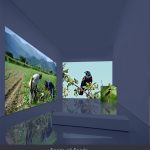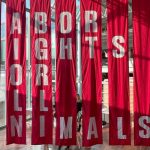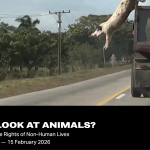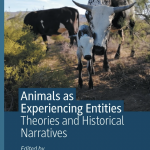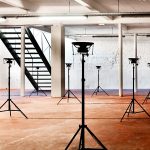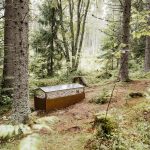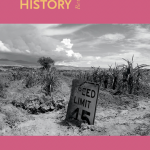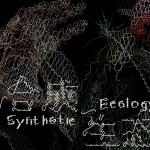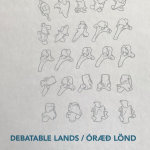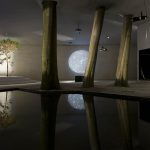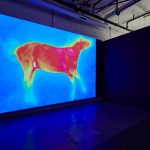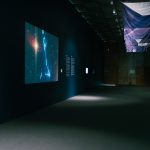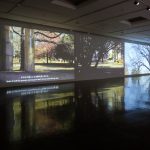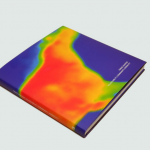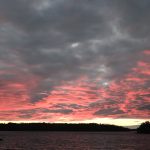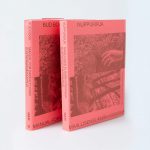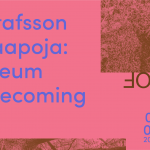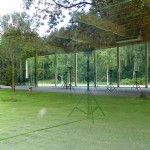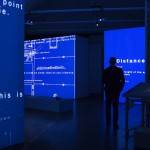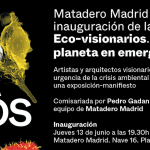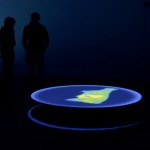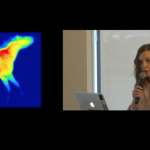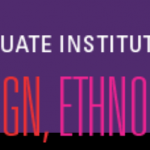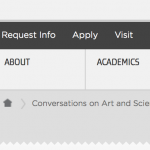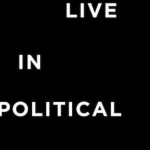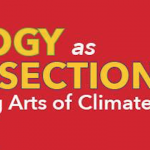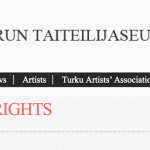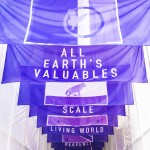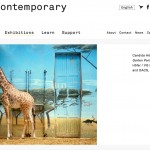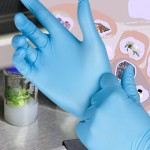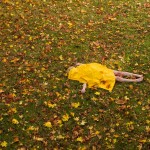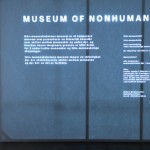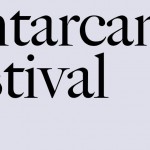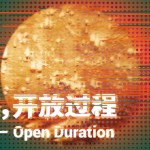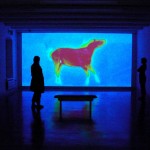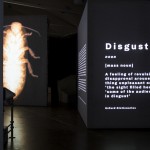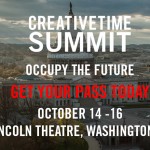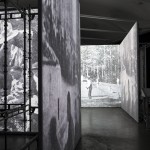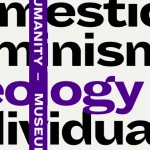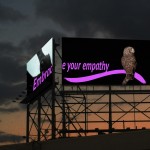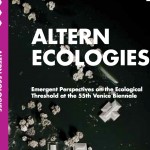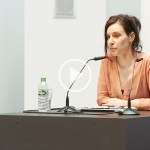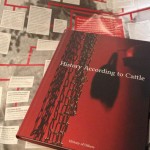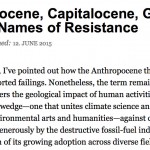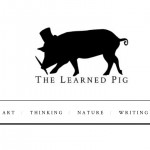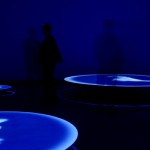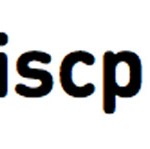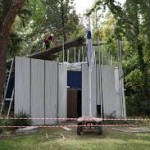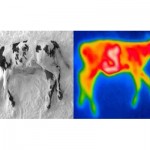Haastattelu, Toisten Puolue (2011)
Terike Haapoja ja Birgitta Walhberg
Terike Haapoja: Oli kiinnostavaa kuinka sanoit että kun juuri filosofit johtavat keskustelua heidän oikeuksistaan, niin niiden vieminen käytäntöön on toinen asia.
Birgitta Walhberg: Mielestäni on kiinnostavaa että kun puhumme heistä oikeudellisessa merkityksessä oikeustieteilijät eivät ole osallistuneet siihen keskusteluun millään tavalla, vaan sitä käyvät yhteiskuntatieteilijät ja filosofit. Oikeustieteilijät osallistuvat osallistuvat oikeastaan vain ikään kuin ylhäältä käsin sanomalla miksi ei ole mahdollista että heillä olisi oikeuksia. He perustavat mielipiteensä oikeudellisiin lainalaisuuksiin kuitenkaan osallistumatta keskusteluun pohtimalla laajemmin miten ne voisivat olla mahdollisia, tai sitä olisiko yleensä järkevään heidän, eläimen kannalta, että säädetään eläinten oikeuksista. Nyt ehkä pikku hiljaa oikeustieteilijät alkavat osallistua tähän keskusteluun, koska paine yhteiskunnasta käsin on niin mittava.
TH: Tämä on mielenkiintoista, koska luulisi että juuri oikeustieteilijät eläisivät sen ajatuksen kanssa että laki on sopimus jotka on koko ajan työn alla, eikä jollakin tavalla annettu järjestelmä.
BW: Tietenkin itse lainsäädännön pitää olla vuorovaikutuksessa yhteiskunnallisen keskustelun kanssa, ja se onkin elävä ja alati muuttuva. Mutta olemassaolevan lainsäädännön tulkinta ja soveltaminen – mikä on minun näkemykseni mukaan kaikkein tärkeintä heidän kannaltaan, koska ne ovat ne raamit jotka me annamme heidän elämälleen – voi olla aika sulkeutunutta ja hyvin oikeudellisiin perusteisiin perustuvaa keskustelua.
TH: Esimerkiksi feminististä tutkimusta vähätellään joskus pseudotutkimukseksi koska siihen liittyy niin vahva poliittinen intressi. Onko tämän tyyppisen lähestymistavan ongelma myös että selkeästi jostakin eettisestä näköulmasta lähtevää tutkimusta ei oteta vakavasti?
BW: Jollakin tavalla kyllä näen, että oikeuteen on jo sisäänkirjoitettu tietty eettinen kannanotto. Mutta se kannanotto on tietysti hyvin sidottu tiettyyn aikaan, esimerkiksi lainvalmisteluaikaan, ja silloin yhetiskunnassa voimassa olevaan eettiseen käsitykseen. Sitten voi mennä kymmenen, viisitoista vuotta ennen kuin sitä ainsäädäntöä uudistetaan, minä aikana eettiset ja moraaliset käsitykset heistä ovat voineet muuttua paljonkin. Lainsääädntö on aika jäykkää ja hidasta yhteiskunnallisiin muutoksiin nähden. En osaa nähdä että oikeus olisi vapaa yhteiskunnan eettisestä käsitysmaailmasta. Mutta on toinen asia kuinka lakia sovelletaan käytännössä heidän elämäänsä, ja siinä voi olla suurikin kuilu. Voi olla että lainsäädäntöön on sisäänkirjoitettu paljonkin heille tarkoitettua hyvää, mutta jollei sitä näy lain käytännön soveltamisessa, niin lopputulos jää heille hyvin laihaksi – ja voi käytännössä jäädä täysin merkityksettömäksi. Siitä huolimatta että lainsäädäntötyössä ollaan arvioitu asioita eettisesti ja moraalisesti heidän hyvänsä kannalta. Jos ajatellaan esimerkiksi voimassa olevaa eläinsuojelulakia ja siihen liittyviä esityöitä, niin siellä on kesusteltu hyvin paljon heille kuuluvasta hyvästä. Koko lain tarkoitus on suojella heitä parhaalla mahdollisella tavalla, eikä vain suojella vaan edistää heidän hyvinvointiaan.
TH: Olen itse kiinnittänyt huomiota siihen, että suojeluun ja ihmisten velvollisuuksiin heitä kohtaan perustuvassa lainsäädännössä usein tarpeellisuusnäkökulma on keskeinen, eli essimerkisi tarpeettoman kärsimyksen käsite. Tarpeellisuus on kuitenkin hyvin pitkälti riippuvaista siitä, mikä on tarpeellista ihmisen kannalta, ei heidän kannaltaan. Tästä johtuen sama olentoa voidaan kohdella laillisesti hyvin eri tavoilla riippuen siitä kontekstista missä hän on. Tämä ehkä erottaa heitä suojelevan lainsaäädännön ja oikeusajattelusta.
BW: Heidän kohdallaan en näe oikeastaan ratkaisuna sitä, että heillä olisi oikeuksia, eli että heidän oikeutensa olisivat sisäänkirjoitettu lainsäädäntöön. Olisimme samojen ongelmien –mitä ne oikeudet olisivat, miten ne toteutuisivat käytännössä –edessä uudestaan, koska ne olisivat edelleen me ihmiset jotka arvioisivat oikeuden sisältöä ja sen toteutumista. Eli emme pääse tästä ihmisen tekemästä tulkinnasta pois. Siinä suhteessa näen paljon tehokkaampana, että keskityttäisiin ennen muuta toimimaan sen puolesta, että lainsäädäntöön kirjatut velvollisuudet heitä kohtaan olisivat mahdollisimman tehokkaita heidän kannaltaan, ja sillä tavalla faktisia, ettei lainsäädäntö antaisi meille mahdollisuutta irtautua siitä velvollisuudesta. Minkä näen ongelmana nykyisessä lainsäädännössä on, että eläin nähdään suojelun objektina, eikä heille itselleen anneta mitään itseisarvoa. Jolloin ihmisen tekemän tulkinnan ja soveltamisen perustana on että heidät nähdään objektina jota me suojelemme. Haluaisin laajentaa tätä niin, että jokaisella eläinyksilöllä olisi myös itseisarvo. Se olisi periaatteellinen kannanotto siihen suuntan, että koko lainsäädännön tulkinta ja soveltaminen muuttuisi eläinkeskeisemmäksi. Olisimme edelleen hyvin pitkälle samojen ongelmien edessä, mutta näen itseisarvon säätämisen keskeisenä siinä mitkä lasit laitamme päähämme kun luemme lainsäädäntöä. Ja nyt meillä on objekti-lasit.
TH: Tämä käytännön painottamisen näkökulma eläinoikeuskeskusteluun on mielenkiintoinen. Oma intuitiivinen lähtöoletukseni oli, että kun meillä on erilainen lainsäädäntö joka koskaa heitä, ja toisaalta laki velvoittaa meitä mutta ei heitä, niin tämä fundamentaalisena nähty ero heidän ja meidän välillämme legitimoi tietyt käytännöt.
BW: Minulla on sellainen käsitys, että ne, jotka tätä oikeuskeskustelua käyvät ovat niin kiinni omissa traditioissaan ja määritelmissään, että eri argumenit eivät koskaan kohtaa. Ja näistä voi keskustella ja on hyvä keskustellakin, mutta se ei auta sitä eläintä. Itseisarvon käsitteen omaksuminen olisi jossakin siellä puolitiessä. En halua sitoitua sellaiseen ajatukseen että eläimille ei tulisi koskaan oleman oikeudellisesti säädettyjä oikeuksia. Mutta näen että tämä keskustelu mitä nyt käydään ei parhaalla mahdollisella tavalla suojele heitä kärsimykseltä tai edistä hyvinvointia. Itseisarvon käsite auttaisi pääsemään eteenpäin tässä keskustelussa, eikä se vaatisi muuttamaan meidän oikeusjärjestelmäämme mitenkään. Se olisi turvallinen askel eteenpäin ja mahdollistai sen, että voisimme vatia tiukempia velvollisuuksia suojeleman heitä kivulta ja kärsimykseltä. Se myös edistäisi hyvinvoinnin edistämisen ulottuvuutta lainsäädännössä. ??TH: Tätä kautta voisi luoda maaperää myös…
BW: ..tuleville mahdollisille oikeuksille. Mitä ne sitten olisivatkaan.
TH: Monessa käymässäni keskustelussa on nostettu esiin tarve muuttaa käsiteistöämme niin, että pystyisimme hahmottamaan maailmaa perustavalla tavalla toisin. Ja ratkaista sitä kautta esimerkiksi tämä kysymys heidän oikeuksistaan, joka nykyisen ajattelun ja käsitteistön sisällä vaikuttaa mahdottomalta.
BW: Aikoinaan, kun kysymys naisten oikeuksista nousi esiin, yksi vasta-argumentti oli että se ei sovi oikeudelliseen käsitteistöön. Nyt käydään samaa keskustelua mutta siitä, miten ajatus eläinten, heidän oikeuksistaan sopisi meidän oikeusjärjestelmäämme. Heidän oikeuksiensa sisäänkirjoittaminen lainsäädäntöön vaatisi kyllä täysin täysin uuden järjestelmän ihan konkreettisesti siinä miten lakia tulkitaan ja sovelletaan. ??Näiden muutosten sisäistäminen vaatisi tietysti aikaa – ihmisillä on rajllinen kapasiteetti muuttaa käsitteitä ja käsityksiä. Mielestäni tässä oikeuskeskustelussa on surullista se, että sitä käydään aika vähän siinä yhteydessä että mitä nääm oikeudet konkreettisesti olisivat ja miten ne toteutuisivat. Tai siinä, että olisiko muita vaihtoehtoja tehokkaasti auttaa heitä tai edistää heidän hyvinvointiaan, tai sitä miten “me” “heitä” käytämme. Tässä tulee tas kieli vastaan siinä miten voidaan puhua heistä ja meistä.
TH: Tämä on ehkä hyvä esimerkki siitä että kieli ei nykyisellään taivu puhumaan heistä “heinä” –
BW: – tai siitä tulee kömpelöä kieltä. Jollakin tavalla olen siis ollut surullinen tämän tutkimusprosessin aikana siitä että vuoden menevät ja hyvin vähän on oikestaan muuttunut, vaikka keskustelua heidän oikeuksistaan tai lainsäädännöstä on kyllä käyty puolesta ja vastaaan ja monesta eri näkökulmasta. Mutta siitä perustavasta kärsimyksen tilanteesta ei olla päästy eteenpäin. Ja se on mielestäni hyvin surullista. Itse uskon että on olemassa jonkinlainen perustotuus siitä mitä heidän hyvinvointinsa käsittää. Meillä on ehkä puutteellinen käsitys siitä, mutta että siellä on totuuden siemen olemassa. Ajatukseni itseisarvon käsitteestä kumpuaa tästä. Jos näemme heidät objektina jo itsessään vie ajatukseen siitä että on ok käyttää heitä ja että he palvelevat meitä tavalla tai toisella. Objektiuden lähtökohta itsessään vie poispäin tästä totuuden siemenestä. Mutta jos voimme lähteä siitä, että käsityksemme heistä on epätäydelinen emmekä täysin ymmärrä heidän maailmaansa, mutta tästä huolimatta heillä on itseisarvo jota meidän tulee kunnioittaa, lähestymme heitä eri tavalla. Eikä tässä edellytetä sitä, että heillä pitäisi olla oikeuksia meidän maailmassaan. ??TH: Toinen haastattelemani ihminen, oikeustieteen professori Markku Oksanen lähti vahvastis iitä näkökulmasta, että oikeus on ihmisen tapa hahmottaa maailmaa, ja koska emme voi tehdä heidän kanssaan moraalisia sopimuksia kysymys heidän oikeuksistaan on mahdoton sinänsä. Tämä sinun muotoilusi ehdottaa, että meillä voi silti olla jonkinlaisia eettisäi velvollisuuksia kunnioittaa heidän itseisarvoaan.
BW: Jollakin tavalla änen oikeusvaatimuksen jopa vallan välineenä heitä kohtaan – keitä me olemme sanomaan mitkä heidän oikeutensa ovat. Eli jo vaatimalla heille oikeuksia me alimstamme heidät meidän maailmaansa. Mutta jos puhutaan itseisarvosta, voidaan keskustella siitä että heillä on itseisarvo samalla tavalla kuin meillä on itseisarvo, ja meidän pitää kunnioittaa heitä sen takia, että he ovat heikompia meidän maailmaamme nähden.
TH: Eli lähteä siitä yhteiskunnallisesta todellisuudesta, jossa nämä kohtaamiset tapahtuvat?
BW: Ehdottomasti. Ja silloin päästään mielestäni kiinni asioiden konkreettista muuttamista. Ja usein keskustelu on helpompi käydä kun sitä käydään konkreettisista asioista eikä oikeuskeskustelun tasolla.
TH: Tääm on kiinnostavaa myös siksi, että olen pyrkinyt kirjoittaa tätä projektia siitä näkökulmasta, että laajennan käsitteitä kuten yhteiskunta käsittämään myös heidät, ja tuntuu että jos siinä tulee seinä vastaan. Kieleeen on ikään kuin kirjoitettu sisään tietty oletus yhteisöstä ihmisiyhteisönä, ja ihmisestä tietynlaisena. Vaikka ihmisoikeuden lähtökohtana on erilaisuuden kunnioittaminen, niin siellä on taustalla essentialistinen ajatus siitä että ihinen on tietynlainen ja yhteisö lähtökohtaisesti perustuu tällaiseen inhimilliseen samanlaisuuteen. Mutta jos lähdetään tällaisista konkreettisista valtasuhteista niin yhtäkkiä aukeaa se –
BW: Kyllä. Silloin voidaan keskustella toisella tasolla heidän asioistaan. Uskon siihen, että tääm olisi tehokkaampi tapa heidän kannaltaan, koska silloin meidän vajavainen käsityksemme heistä aukeaa toisella tavalla ja voimme päästä käsiksi niihin ongelmiin joita syntyy kun “käytämme heitä”.
TH: Mistä sitten luulet että johtuu ettei muutosta ole keskustelusta huolimatta saatu aikaan?
BW: Henkilökohtainen käsitykseni on, että me emme pysty käsittelemään kovin montaa isoa asiaa yhdellä kertaa. Ja kaikki ne asiat jotka nostetaan agendalle nousevat sinne eräänlaisen aaltoliikkeen kautta. Jos nyt ajatellaan vaikka heidän historiaansa, niin 70-luku oli tehotuotannon aikaa jolloin näkökulma oli hyvin tehotuotantokeskeinen. Kun alettiin hahmottaa että he ovatkin olentoja jotka tuntevat ja ovat muutenkin hyvin samanlaisia kuin me olemme ja nämä tuotanto-olosuhteet tulivat julki, se kosketti ehkä jotain meissä, sai aikaan tunteen siitä että tämä on väärin. Ja kun niin moni koki, että tämä on väärin, heidän kohtelunsa pikkuhiljaa nousi agendalle. Luulen, että tässä tulee vastaan meidän rajallinen kykymme käsitellä näitä asioita, ja että valitettavasti täytyy aina mennä tienä päätyyn ennen kuin asiat nousevat agendalle. Ja tietenkin jos ajattelen esimerkiksi oikeustieteellisesti, niin Suomessa ei ole paljonkaan tehty tutkimusta tällä alueella, jolloin yt nämä puheenvuorot alkavat nousta. Se mikä on sääli on että se on hidas prosessi. Sääli heidän kannaltaan. ??TH: 2000-luvun aikana moniin maihin on syntynyt eläinten puolueita tai vastaavia. Ne eivät ehkä ole vielä kovin vahvoja liikkeitä, mutta jos se että tällainen näkökulma on nousemassa on suuri muutos.
BW: Kyllä on. Eläinten hyvinvoinnnin tutkimuskeskuksia on monessa maassa myös. Uskon, että tämä vuosituhat on heidän vuosituhantensa. Uskon myös ruohonjuuritasolla siihen, että ei välttämättä tarvita lainsäädännöllistä muutosta siihen, että ne jotka tulkitsevat ja soveltavat lainsäädäntöä, ja ehkä myös eläinten haltijat ja muut jotka vastaavat heidän hyvinvoinnistaan muuttavat suhtautumistaan. Se voi olla vain toisen ihmisen lause tai puheenvuoro, joka saa aikaan että syntyy uusi ajatus joka muuttaa ihmisen käytöstä tai tapaa soveltaa lakia heidän hyvinvointiaan paremmin edistäväksi. Mikä on tietenkin heidän kannaltaan paljon tehokkaampaa kuin koko lainsäädäntöprosessin tai lain uudistamisprosessin läpikäyminen.
TH: Mitkä ovat sitten sellaisia tapoja tai instansseja, jotka savat meidät tuntemaan empatiaa tai herättämään tällaisen kokemuksen?
BW: Tieteen edustajana tietenkin näen että heidän pitämisensä agendalla on todella tärkeä tehtävä meille tutkijoille. Meidän pitäisi myös uskaltaa käyttää puheenvuoroja heidän hyväkseen. Tieto itsessään on arvokasta, jos se lähtee heistä käsin. Esimerkiksi eläinsuojeluvalvojan käytännön kokemukset siitä minkälaista heidän elämänsä käytännössä on navetan seinien sisäpuolella. Tai tieto siitä, miten eläinsuojeluviranomaiset tulkitsevat ja soveltavat lainsäädäntöä. Tätä tietoa on hyvin vähän julkisuudessa ja mielestäni olisi ensiarvoisen tärkeää, että tätä tasoa saataisiin enemmän älpinäkyväksi ja julkiseksi sen takia, että näiden käytäntöjen muuttaminen on paljon tehokkampaa kuin lain muuttamine heidän kannaltaan. Se, miten viranomainen tulkitsee ja soveltaa lakia vaikuttaa voimakkaammin heidän elämäänsä kuin että tapausta puidaan oikeusistuimessa mikä tapahtuu aina jälkikäteen. Sen takia viranomaispuoli, ennaltaehkäisevä työ, pitäisi saada julkisemmaksi.
TH: ON vaikea kuvitella yhteiskunnan osa-aluetta joka olisi yhtä vankasti katseilta suojassa kuin eläintuotannon yksityiskohdat. Onko tähän syynä yksityisen omaisuuden suoja?
BW: Siihen on varmasti monta syytä. Ensinnäkin se, että tuotantoeläimiä pidetään kotirauhanpidon piirissa, eli ihmisen kotien ja tonttien alueella. Toinen syy on, että jossakin vaiheessa eläintaudit alkoivat säädellä sikaloihin ja navetoihin pääsyä. Sen nimissä ollaan ehkä viety vielä pidemmälle siinä, että vaikkei riskiä olisikaan, niin tautiriskiä käytetään syynä. Suomessahan eläintautitilanne on hyvä. Tämä menee nyt luulon piikkiin, mutta uskon, että jokainen joka pitää eläimiä tehotuotannossa tai tuotantoeläimenä nykypäivän tiloissa tiedostaa että tämä ei ole oikein. Että tämä pitotapa ei ole heidän hyvinvointinsa mukaista. Esimerkiksi emakko joka on häkissä jossa hän ei pysty edes kääntämään itseään tai ei voi kuin ottaa askeleen eteen tai taakse. Uskon, että ihmisessä herää jonkinlainen häpeä, joka estää sen että toiminta olisi hyvin avointa. Koska ihminen joka häpeää tai jolla on huono omatunto yrittää aina argumentoida sen asian puolesta. Ihminen, jolla on täysin hyvä olla asian kanssa voi olla myös täysin avoin, koska kokee että hänen toiminnassaan ei ole mitään hävettävää tai peiteltävää. Uskon, että tämä pätee myös viranomaistoimintaan – että jokainen tietää, että voisi tehdä heidän puolestaan paljon enemmän. Joskus myös menee sekaisin kenen puolesta eläinsuojelulainsäädäntöä tulkitaan ja sovelletaan. Lain tarkoituksessa ilmaistaan selvästi että se, jota suojellaan on eläin ja hänen hyvinvointinsa. Mutta usein kun tarkastellaan viranomaisten päätöksentekoa tai lain soveltamista nousee kysymys suojellaanko viranomaista itseään, teurastamoa, eläimen omistajaa vai jotakin muuta tahoa.
TH: Millä käytännön ratkaisulla heidän näkökulmaansa voisi paremmin tuoda lain tulkitsemiseen?
BW: Julkisuus on mielestäni hyvä tapa. Julkisuus mahdollistaa, että ihmiset ainakin tietävät asioista, ja yhteiskunnallisen keskustelun siitä. Se mahdollistaa myös sen, että kun viranomainen tulkitsee tai soveltaa lakia, hän jo näin tehdessään tietää että hänen työtään arvioidaan ihmisten maailmassa laajemmin. Uskon, että tällaisen oman työn arvioinnin kautta viranomainen pohtisi myös tarkemmin ketä laki pyrkii suojelemaan.
TH: Miten suhtaudut siihen että heillä olisi omia laillisia edunvalvojia tai asianajotoimistoja?
BW: Olen aikaisemmin ajatellut että jo se että ne, jotka lakia soveltavat ymmärtäisivät paremmin lain tarkoituksen, johtaisi siihen että heidän asiansa olisivat paremmin. Mutta olen viimeisen vuoden aikana muuttanut käsitystäni siitä. Mitä enemmän paneudun viranomaistoimintaan ja päätöksentekoon eläinsuojeluasioissa olen vahvemmin sitä mieltä että näissä asioissa pitäisi olla omat asiantuntijansa. Vähän samalla tavalla kuin ympäristöoikeuden piirissä on avainsyyttäjiä, jotka hoitavat ympäristöasioita. Samalla tavalal eläinsuojelun puolella olisi heiädn etunsa mukaista että olisi avainsyyttäjäi jotka ajaisivat heidän asiaansa.
TH: Onko tällaisia aloitteita tehty?
BW: Siitä on keskusteltu jo ainakin viisi vuotta juuri syyttäjäpuolella. Eläinsuojelujärjestöt ovat esittäneet ehdotuksia esimerkiksi juuri avainsyyttäjistä. Eläinoikeuskeskustelun piirissä on myös keskusteltu siitä että pitäisi olla eläinasianajajia, mutta tietääkseni sen suhteen ei ole tapahtunut mitään konkreettista vielä.
TH: Mahdollistaako meidän nykyinen lainsäädäntömme heidän edustamisen oikeudessa?
BW: Ei niin, että eläin olisi itse asianosainen. Mutta järjestelmähän toimii jo nyt niin, että yleinen syyttäjä voi nostaa syytteenä eläimen omistaajaa vastaan. Mutta jollei syyttäjä ole paneutunut eläinasioihin hänen voi olla vaikea nähdä mikä se substanssi on, mitä pitäisi ajaa. Uskon että tämä on syy siihen että näitä tapauksia on tuomioistuimessa moneen muuhun tapaukseen nähden aika vähän. Ja vaikka eläinsuojelulaissa määrätään että eläinsujeluviranomaisen, joka epäilee että lakia olisi rikottu tulisi tehdä ilmoitus poliisille, näitä ei tehdä kovinkaan paljon. Ne, joita tehdään ovat melkein kaikki hyvin räikeitä ja vakavia, ja niistäkin vain osa päätyy syytteen nostamiseen. Ja mikä tuomioistuimen tuomio asiassa on voi olla hyvin kaukana lähtötilanteesta.
TH: Koko viranomaisprosessi siis katsoo näitä tapauksia sormien välistä.
BW: Niin, tai sitä tilannetta ei arvioida heidän näkökulmastaan, vaan arvioidaan siellä rikosoikeuspuolella eläimen omistajan toiminnan ja velvollisuuksien kautta. Silloin lainsäädäntöä voidaan tulkita heidän kannaltaan vähemmän heidän kannaltaa hyvällä tavalla.
TH: Miten itseisarvokäsitteen nostaminen lain tulkinna ytimeen muuttaisi tätä käyännön tasoa?
BW: Se muuttaisi juuri sitä lähtökohtaa eli sitä, millä silmälaseilla substanssipykäliä tarkastellaan. Toisekseen se muuttaisi sitä konkretiaa mitä voitaisiin vaatia substanssipykäliin sisäänkirjoitettaviksi. Toisin sanoen pääsisimme lähemmäksi heidän todellisuuttaan tai meidän vajavaista ymmärrystämme heidän todellisuudestaan. Jos lähtökohtana on eläimen itseisarvo, niin voimmeko me ylipätään tehdä päätös etä kastroidaan alle kahdeksan päivän ikäinen porsas. Jos vastaus on ei niin se voidan suoraan kieltää siellä substanssipkälässä. Totta kai näistä voidaan tänäkin päivänä keskustella, mutta jos lainsäädännön lähtökohtana on, että he ovat obekteja niin miksi emme voisi päättää ettää alle kahdeksan päivän ikäinen porsas voidaan kastroida.
TH: Voidaan siis päättää mitä tahansa ilman rajoitteita-
BW: Aivan, voidaan päättä mitä vaan, koska he ovat objekteja meidän maailmassamme. Minusta itseisarvin käsite syventäisi keskustelua ja muuttaisi koko lätökohtaa tälle keskustelulle. Eivät ne substanssipykälät silti muutu sormia näpäyttämällä, mutta pääsisimme eteenpäin tässä keskustelussa. Tai toisin sanoen, pääsisimme lähemmäksi eläintä kun nyt, kun keskustellaan juupas-eipäs -mentaliteetilla heidän oikeuksistaan. Mielestäni nyt olisi hyvö hetki ajaa tätä asiaa kovaa ja äänekkäästi, koska muutaman vuoden kuluttua eläinoikeuslainsäädäntö tulee uudistumaan kokonaisuudessan.
TH: Jos ajateltaisiin että olisi olemassa Toisten Puolue, joka ajaisi heidän näkökulmaansa yhteiskunnallisessa päätöksenteossa, niin mitkä voisivat olla tällaisen Toisten Puolueen keskeiset periaatteelliset lähtökohdat?
BW: Tällä hetkellä näen että juuri se, että lainsäädäntöön olisi kirjoitetty heidän itseisarvonsa kunnioittaminen. Ja heidän asiansa pitäminen agendalla konkreettisten asioiden esiintuomisen ja keskustelun avulla. Ja että puolueen jäsenet uskaltautuisivat pohtimaan tulevia skenaarioita avika vapaamielisesti kokematta uhkaa siitä että tämä romuttaisi tällä hetkellä voimassa olevia käsitteitä. Että olisi mahdollista ajatella konkreettisia tulevaisuuden skenaarioita heidän lähtökohdistaan, sen pohjalta mitä me nyt ymmärrämme heidän elämästään ja olemisestaaan. Siinä on jo kolme niin isoa asiaa, että siitä varmasti poikisi sitten jo paljon muutakin.
TH: Kiitos.
***
Walhberg kommetoi haastattelua vuonna 2018 näin:
“Haastattelusta on monta vuotta ja ilokseni voin niin tutkijana kuin myös ihmisenä todeta, että oma ajattelu on kehittynyt tuosta ajasta. Tänä päivänä näen ensiarvoisen tärkeänä, että normihierarkian korkeimmalla tasolla, eli Suomen perustulaissa, säädetään eläinten perusoikeuksista. Eläinten perusoikeuksista säätäminen olisi myös EU:n peruskirjan, artikla 13, jossa eläimet tunnustetaan tunteviksi olennoiksi, mukaista. Eläinten perusoikeuksilla en tarkoita, että eläimille tunnustettaisiin ihmisoikeuksia, vaan eläinten perusoikeudet tulisivat ihmisoikeuksien rinnalle tasapainotettaviksi. Tasapainottamisella tarkoitan sitä, mitä viranomaiset ja tuomioistuimet tekevät jo nyt eri ihmisoikeuksien kesken. Eläinten perusoikeudet olisivat tehokkaita silloin kun sellainen ihmisen toiminta, joka ei turvaa eläinten perusoikeuksien täyttymistä, tasapainotetaan siten, että kummankin osapuolen perusoikeudet voidaan perustellusti todeta toteutuneiksi riittävästi. Sama asia pätee tietysti myös toisin päin: ihmisen perusoikeudet voisivat myös rajoittaa eläinten perusoikeuksia. Ensiarvoisen tärkeää niissä tilanteissa olisi kuitenkin välttämättömyys-, suhteellisuus- ja varovaisuusperiaatteiden noudattaminen. Esimerkiksi elintarvike- ja turkistuotannossa käytettävien eläinten todellisuus osoittaa nykyisen eläinsuojelulainsäädännön hampaattomuuden.
Eläinten hyvinvoinnin edellytyksiin ja varmistamiseen keskittyvää eläinsuojelulainsäädäntöä tarvitaan eittämättä tulevaisuudessakin, mutta eläinten oikeudellista asemaa on samalla vahvistettava ihmiseen nähden normihierarkian korkeimmalla tasolla. Kun ihmisen henkilökohtaisella valinnalla on uhri ja lisäksi usein luontoa ja sen moninaisuutta tuhoava vaikutus, valinnan ei enää tulisi olla henkilökohtainen. Julkisen vallan pitää vahvemmin ohjata yhteiskuntaa kohti ihmisten ja muiden eläinten välistä kunnioittavaa yhteiseloa meidän kaikkien ja myös tulevien sukupolvien hyväksi. Oikeusvaltiossa se tapahtuu lainsäädännön kautta ja siihen ei riitä eläinten itseisarvon tunnustaminen tavallisen lain tasolla, kuten eduskunnan käsittelyssä olevassa uudessa eläinsuojelulaissa (ns. laki eläinten hyvinvoinnista) on esitetty. Esityksessä kumotaan itseisarvo -käsitteen varsinainen sisältö monin ristiriitaisin tavoin ja muokataan sopimaan ihmisen tavanomiseen toimintaan. Erityisesti niiden eläinten kohdalla, joihin liittyy taloudellinen intressi. Sellainen toiminta on niin eläinten kuin ihmistenkin pettämistä. Ihmisen toimintaa muihin elollisiin nähden on haastettava ja vaadittava niin itseltään kuin päättäjiltäkin enemmän. Toivoa tuo se, että tilanne on niin vakava, että siihen on herätty ympäri maapalloa, myös oikeusoppineiden keskuudessa.”
Dr. Soc.Sc (Public Law) Birgitta Wahlberg is working as university teacher and researcher in public law at the Åbo Akademi University, Department of Law in Finland. Her expertise is animal law.
She is founder of the Global Journal of Animal Law (GJAL) published by Åbo Akademi University, Department of Law (Editor-in-Chief until 2016) and also of the Finnish Animal Rights Lawyers Society. She has published several articles on a variety of animal law topics and is a skilled speaker both nationally and internationally. Dr. Wahlberg combines science and activism for the benefit of animals. Her main research interest is animal law as a science of law and the legal status of animals in different legal systems. Especially its impact on animals in practice. Dr. Wahlberg is the originator to the proposal of the Declaration of Animal Rights and Freedoms.
